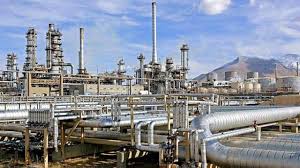
Port Harcourt Refinery Shuts Down Less Than a Month After Resumption, Despite $1.5 Billion Rehabilitation Claims

The Port Harcourt Refinery has ceased operations for the second time in less than a month after claimsof resuming production by NNPC, sparking concerns about the effectiveness of the $1.5 billion rehabilitation project.
The shutdown was reported on Thursday, December 19, 2024, as the loading of Premium Motor Spirit (PMS), commonly known as petrol, abruptly halted.
By Friday, December 13, the refinery’s 18-arm loading bay, typically bustling with activity, was eerily silent, with stranded tankers parked along access roads and inside the premises.
The Nigerian National Petroleum Company Limited (NNPCL) had heralded the refinery’s November 26 relaunch as a “landmark moment” for the country’s energy sector.
However, industry insiders and sources have since raised concerns about the refinery’s operations and the quality of the distributed products.
Some sources revealed that only the refinery’s Crude Distillation Unit (CDU) was functional. While the CDU can produce products like naphtha, kerosene, and diesel, it cannot refine components required for PMS production.
According to reports, NNPCL resorted to blending Crack C5 with naphtha from primary units to simulate PMS. Staff at the refinery warned that this unconventional approach could affect vehicle performance.
Contrary to claims by NNPCL that 200 trucks were loaded with PMS during the relaunch, fewer than 10 trucks reportedly carried petrol, which sources say was old stock from storage tanks.
However, stakeholders expressed scepticism, citing the deserted state of the refinery and questioning the accountability surrounding the costly rehabilitation project.
This marks the second reported shutdown since November, when operations were scaled back shortly after the reopening. At the time, only non-petroleum units were active.
The shutdown has reignited debates over the viability of the refinery’s rehabilitation, with many questioning whether the $1.5 billion investment was effectively utilised.
The refinery, dormant for years, was expected to spearhead Nigeria’s quest for energy self-sufficiency. Yet, the current state of operations casts doubt on the refinery’s ability to fulfil its promises.
Read Also:
- Stampedes at Palliative Distribution in Abuja and Anambra Claim Multiple Lives, Including Children
- Kenyan Petitioners Seek Over $54.5 Billion In Damages From 2 U.S Companies Over Toxic Sanitary Products
- Recent Stampedes at Palliative Venues Reflects Systemic Failures in Our Society – Obi
About The Author
Related Articles
Tinubu Government Delays Release of Signed Tax Acts to the Public
Four days after President Bola Tinubu announced the signing of four tax...
ByMayowa DurosinmiJune 30, 2025As Tinubu Urges Africa-Caribbean Unity in Saint Lucia, Over 272 Nigerians Killed in June Alone
While Nigerians deal with deadly violence, worsening hunger, and mass flooding, President...
ByWest Africa WeeklyJune 30, 2025You Can’t Tax a Dead Economy: Nigeria Is Suffocating Under Its Own Policies
As Nigeria’s Central Bank clings to its benchmark interest rate of 27.5...
ByWest Africa WeeklyJune 30, 2025“Wike is Not a Blessing to Us, He’s a Disaster” — Workers Protest in Nigeria’s Capital Over Unpaid Wages, Poor Working Conditions
Staff members of the Federal Capital Territory Administration (FCTA) in Abuja barricaded...
ByOluwasegun SanusiJune 30, 2025












Leave a comment